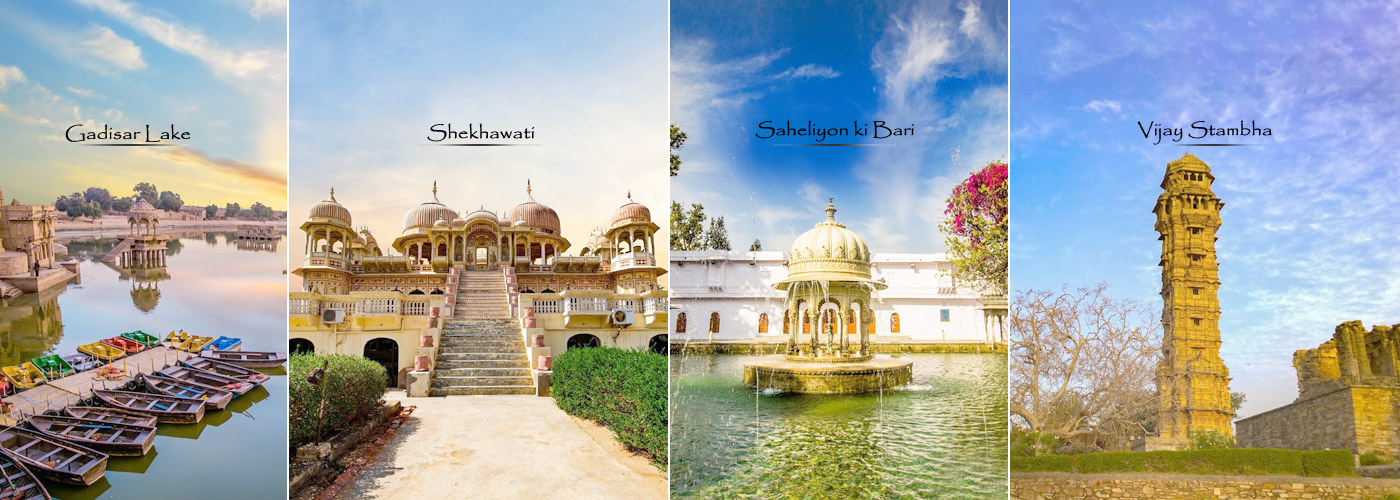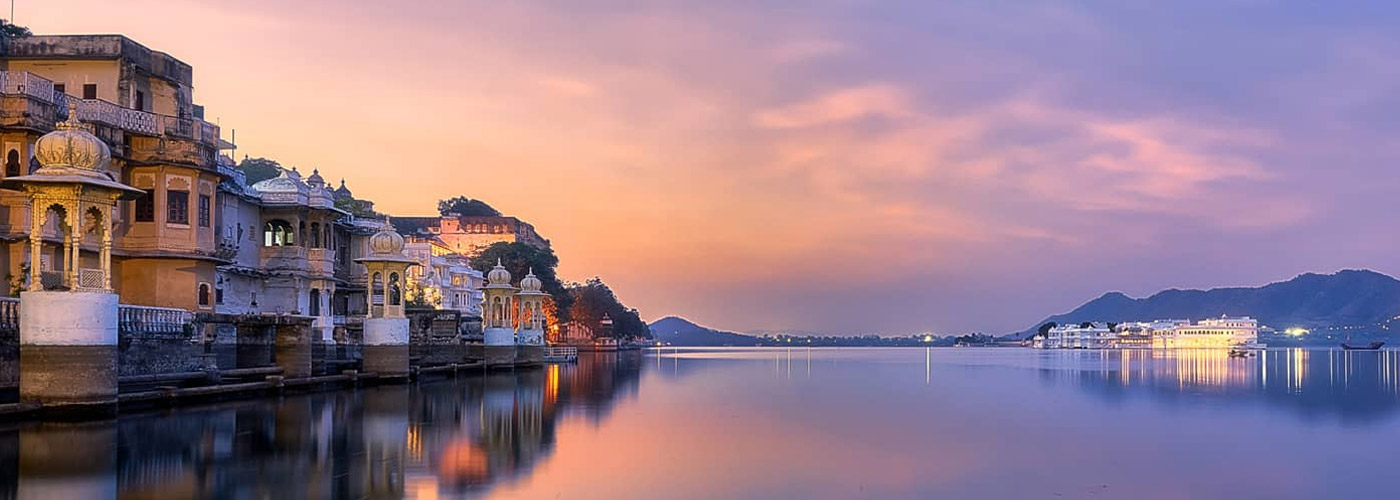B2B Travel Agents of Ranthambore
B2B Travel Agents of Ranthambore enjoys a scenic and historical setting with a number of places to visit. The popular national park in India is primarily famous for its star attraction – Royal Bengal Tiger. There are also many interesting spots & tourist attractions to see in Ranthambore National Park. The Ranthambore National Park is regarded as the most suitable place for wildlife photography in the world. Here you can capture the tiger in its various moods and moments. Besides the Ranthambore Park, there are many other places to visit inside the Ranthambore tiger reserve like the Ranthambore Fort, Padam Lake, Trinetra Ganesh Temple, Jogi Mahal and the various species of flora and fauna, which are also worth a look.
Ranthambore Fort :
This one is the most famous attraction for the tourists after the Jungle safari. One can't miss taking a look at the Ranthambore Fort which is located within the national park. The fort is the testimony to the glory of the Imperial era in Rajasthan. Until the independence of India, this fort was the part of the Jaipur State and the forest around it was used as the hunting land by the Maharaja of Jaipur. Located within the periphery of Vindhya and Aravali hills, the fort offers you an enchanting view of wildlife with the abundance of raw valleys, lakes and plenty of wild animals and birds in the thick forest spread around it. The fort has witnessed the long history of imperial Rajasthan and its changing dynamics since thousands of years.
Kachida Valley :
If you are a nature lover then this place will certainly amuse you with its serene beauty and tranquil environment. The Kachida Valley is situated on the edge of the park and a layer of lush thick greenery, many rocky outcrops, slender hills and beautiful lakes together constitute this valley. You can visit here in a jeep to explore the area. You most probably will get a sight of a panther, which is the prime wild species of this area as they don't venture deep inside the forest in order to avoid the conflict with the tiger, which is much more powerful than a panther. Along with the panthers, you will find a good number of wild bears in this area.
Padam Talao :
Being the biggest lake within the territory of Ranthambore National Park, the Padam Talao is the best gift of nature to this park and to the people visiting this park. This is a heaven for bird watchers due to the sight of a large number of beautiful resident and migratory birds found around the lake. One can also get a sight of wild animals who visits here to quench their thirst mostly in the morning and evening time. The famous Jogi Mahal is located beside this lake adding a historical pinch to this lake. The lake named as the Padam Talao because most of the time it is filled with the beautiful water lilies offering a picturesque view of the lake. The lake has lush greenery around it making a serene ambiance, which gives an enchanting natural view. Spending some time here is very soothing to the eyes and refreshing to the mind.
Malik Talao :
The beauty of Ranthambore national park is mostly due to the various big and small lakes and water bodies situated in the park nourishing the flora and fauna of the forest. The Malik Talao is one among the few famous lakes inside the park. It is comparatively a small lake but bustling with the vibrant migratory birds which are adding the magical beauty to this lake. The lake is a home to marsh crocodiles, which are found resting beside the lake. The view around the lake is surely captivating and refreshing.
Raj Bagh Talao :
One of the prime tourist attractions in the Ranthambore Park, the Raj Bagh Talao is the most famous and beautiful lake of the park. This lake is considered as the best place to spot a tiger and other wild animals who visit here frequently for drinking the water. Adding to the beauty of the lake, there are Raj Bagh ruins located between the Raj Bagh Lake and Padam Lake attracting visitors to take their imaginations back to the historic era. The grass around this lake is the favorite food for Sambhar and other herbivores which in turn also attracts their predators such as tiger around this lake.
Raj Bagh Ruins :
The testimony of the historic and prehistoric era of Rajasthan, the Raj Bagh ruins is located between the famous Padam Lake and Raj Bagh Lake. It is the collection of ruins of prehistoric monuments, which attract tourists with having historic interests. These ruins of bygone era consist of stone structures of palace outhouses, domes and arches of the ancient period. These structures are not only of the historic interests but also enhance the beauty of the landscape that is surrounded by the lakes and the raw jungle offering an amazing view.
Jogi Mahal :
The famous Jogi Mahal is located in the Ranthambore national park beside the Padam Talao. A forest rest house managed by the forest officials of Ranthambore National Park, The Jogi Mahal was once used as the resting abode by the Royals of Jaipur when they used to visit Ranthambore forest for the hunt excursion. After the end of the imperial era, the forest was turned into the reserve park and the Jogi Mahal was turned into the forest guest house for the tourists. The environment around the Mahal is very meditative and eye catching with the big beautiful lake filled with the water lilies located beside the Mahal. A huge Banyan tree is also located beside the Mahal, which is the second largest Banyan tree in India.
Rajiv Gandhi Regional Museum of Natural History :
The Rajiv Gandhi Regional Museum of Natural History is established at the Ramsinghpura village, 9 km from the Sawai Madhopur. This is the fourth museum of natural history in India and one of the tourist's attractions in Sawai Madhopur. One can include this place in the list to visit while visiting the Ranthambore tiger reserve. The museum offers a look at the biodiversity of the western region of India with their exhibition of rare plants, animals and other regional geology. The museum is opened with the concept of making people aware of the necessity of preserving the rare flora and fauna of the region. The exhibition with the replica of wild mammals like tiger, lion, leopard, chinkara and others showing the wildlife of Rajasthan is the main attraction here.
Ranthambore School of Art :
The Ranthambore School of Art can be the most exciting place to visit in Ranthambore for the art lovers. Located few km away from the Sawai Madhopur station, this art school is primarily focused on using the art form to spread awareness about the need to conserve the wildlife and maintain the bio-diversity of the region for the sake of maintaining balance in nature, which further helps in improving earth's ecosystem. The paintings seen here are mostly depicting the wildlife species of Rajasthan.
Trinetra Ganesh Temple :
Located in the Ranthambore Fort within the Ranthambore national park, the Trinetra Ganesh Temple is one of the oldest temples of Rajasthan and very famous among the devotees of Lord Ganesha. This idol of Lord Ganesha is known as the Pratham Ganesha and this is the only temple in which Lord Ganesha is with his whole family. There are many legends follow this temple, which are told and retold by devotees since the ancient era. The followers of Hindu religion visits here from all over the world especially during the Ganesh festival. If you are in Ranthambore and a devotee of Lord Ganesha then you can join the Aarti that takes place daily five times a day. There is a tradition of inviting Trinetra Ganesha in any auspicious occasion by the devotees. Devotees used to send an invitation mail to the address of this temple.
The places mentioned above are the prime tourist's attractions in the Ranthambore where you can make a visit other than the Jungle safari to make your tour more engaging and enjoyable.
Things to Do in Ranthambore
Ranthambore National Park was established in the year 1957, as a wildlife sanctuary. It was only in the year 1981 that it was awarded the status of a national park. Today, Ranthambore boasts of being one of the most visited national parks in the whole of India. Situated in the Sawai Madhopur District, at the junction of the Aravalli and Vindhya hill range, it serves as the abode of the king of the jungle, tiger. Apart from that, you can find a large variety of animals, birds and reptiles in the park. In this article, we will help you explore what to do and see in Ranthambore.
Wildlife Viewing
Ranthambore National Park is renowned for being home to a rich and varied wildlife. The most popular attraction of this park comprises of its tigers, followed by leopards. Apart from that, you can also spot leopards, striped hyenas, nilgai, macaques, black bucks, rufous tailed hare, Indian porcupines, small Indian mongoose, Indian false vampires, Indian flying foxes, etc. Then, it houses a population of snub nosed marsh crocodiles, desert monitor lizards, tortoise, banded and common kraits, cobras, Indian pythons, north Indian flap shelled turtles, rat snakes, Russell’s vipers, and saw-scaled vipers, as well.
Bird Watching
Ranthambore Wildlife Sanctuary is considered to be a bird watchers paradise. This is because it approximately 272 species of birds, both resident and migratory, can be seen in the park. Some of the most popular species include graylag goose, woodpeckers, Indian gray hornbills, common kingfishers, bee eaters, cuckoos, parakeets, Asian palm swift, owl, nightjars, pigeon, dove, crakes, snipes, sandpipers, gulls, etc. Malik Talao, the Ranthambore Fort, Rajbagh Talao, Padam Talao and the Jhalra area are the areas in Ranthambore that are best suited for bird watching.
Hot Air Ballooning
Ranthambore is one of the places in Rajasthan where hot air ballooning takes place. As you fly miles above the wildlife sanctuary, the lush greenery scenery surely takes you by surprise. The balloon ride also provides you with an opportunity to take some of the best photographs of the wild animals as well as birds, from above, suspended in mid air. Majority of the hot air balloon flights in Ranthambore take off from the helipad on the arterial road. However, you can also take a flight from Ranthambore Road, Madhopur, or any other destination.
Jungle Safari
One of the best ways to explore Ranthambore is through a jungle safari, which takes you as close to the wildlife as possible. It is undertaken on open-roofed canters (small trucks), which can seat 20 people at a time. These canters move on a network of four tracks that crisscross the park. Apart from that, you can also go on a jeep safari. At any given time, a maximum of three open jeeps are allowed on each trail.
How to Reach
By Air :
Jaipur, the capital of Rajasthan, is the nearest airport to Ranthambore. Ranthambore National Park is about 140 Km from Jaipur. You can fly to Jaipur and proceed to Sawai Madhopur by road or rail.
By Rail :
Sawai Madhopur which is just 11 Km from Ranthambore National Park is accessible by rail and is on the main route from Delhi to Mumbai. You can arrive at Sawai Madhopur by rail and take a car or bus to Ranthambore National Park.
By Road :
Ranthambore is easily accessible by road from all destinations across Rajasthan. If you're traveling by road, there are many options from luxury air-conditioned coaches to private taxis and local buses of the Rajasthan Transport Corporation, in which you can reach Ranthambore National Park.


